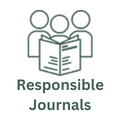Philosophical and theological analysis of the lie from the speech act theory
DOI:
https://doi.org/10.21501/23461780.2011Keywords:
Truth, Speech act, Communicative action, IronyAbstract
In the current philosophical scene we have different semantic theories of
truth. Moreover, the majority of perpetrators of moral theology closely follow
the thought of San Agustin and Santo Tomas de Aquino, by defining the lie as a
language that is contrary to their own thinking with the intention to deceive. It
must be integrated in the philosophical and theological analysis of the lie theory of
speech acts (Austin, Searle and Habermas, among others), since lying is not just
its phrase dimension. It presents, in addition, a phrase force and communicative
intent, since it can reinterpret the classical principles of the amphibole or mental
constraint, answers with double meaning, the lesser of two evils or the white
lies.
Thus, the philosophical and theological notion of lie must take into account the
analysis from the human sciences and, especially, the linguistic sciences. In
addition, remember that it is not always possible nor desirable for humans to
express a perfect match between what the individual says that it is true, what
they believed to be true, and what the reality is. That is why, in addition to the
phrase dimension, it is necessary to incorporate into the analysis of the speech
act of lying the dimensions of coherence, authenticity, loyalty, honesty and
transparency, assuming at the same time the opacity, the paradoxes of life, and
the irony of human existence.
Downloads
References
Austin, J.L. (1982). Cómo hacer cosas con palabras. 3ª edición. Barcelona: Paidós.
Campbell, J. (2006). Mitos, sueños y religión. Barcelona: Kairós.
Dalla Barba, G. (2005). Neuropsicología de la falsa memoria. Revista Argentina de Neuropsicología, 5, 2-14.
De Certeau, M. (1982). La fable mystique. Paris: Gallimard.
García Suárez, A. (1997). Modos de significar. Madrid: Tecnos.
Grech, P. (1995). Quid este veritas? Rivelazione e ispirazione: nuove prospettive. Lateranum, 61, 147-158.
Habermas, J. (2011). Teoría de la acción comunicativa. Complementos y estudios previos. Madrid: Cátedra.
Haring, B. (1982). Libertad y fidelidad en Cristo. Teología moral para sacerdotes y seglares. Barcelona: Herder.
Heidegger, M. (2007). Doctrina de Platón acerca de la verdad. Eikasia. Revista de filosofía, 12(1), 277-300.
Heidegger, M. (2012). De la esencia de la verdad. Barcelona: Herder.
Habermas, J. (2011). Teoría de la acción comunicativa. Complementos y estudios previos. Madrid: Cátedra.
Israeli, I. (2009). A neoplatonic philosopher of the early tenth century. London: University of Chicago.
Kierkegaard, S. (2004). Temor y temblor. Buenos Aires: Losada.
Moscovitch, M. (1989). Confabulation and the frontal systems: strategic versus associative retrievals in neuropsychological theories of memory. En H.L. Roediger III & F.I.M Craik (Eds), Varieties of memory and consciousness: Essay in honour of Endel Tulving, Hillsdale, NJ: Erlbaum, pp. 133-160
Sabanés, D. (Director). (2009). Mentiras piadosas. [Película]. Argentina.
Searle, J. (1990). Actos de habla (3ª ed.). Madrid: Cátedra. United States of America: University of Chicago.
Wittgenstein, L. (2009). Investigaciones filosóficas. En L. Wittgenstein, Obras completas I. Madrid: Gredos
Downloads
Published
How to Cite
Issue
Section
License
La revista y los textos individuales que en esta se divulgan están protegidos por las leyes de copyright y por los términos y condiciones de la Licencia Creative Commons Atribución-No Comercial-Sin Derivar 4.0 Internacional.
















